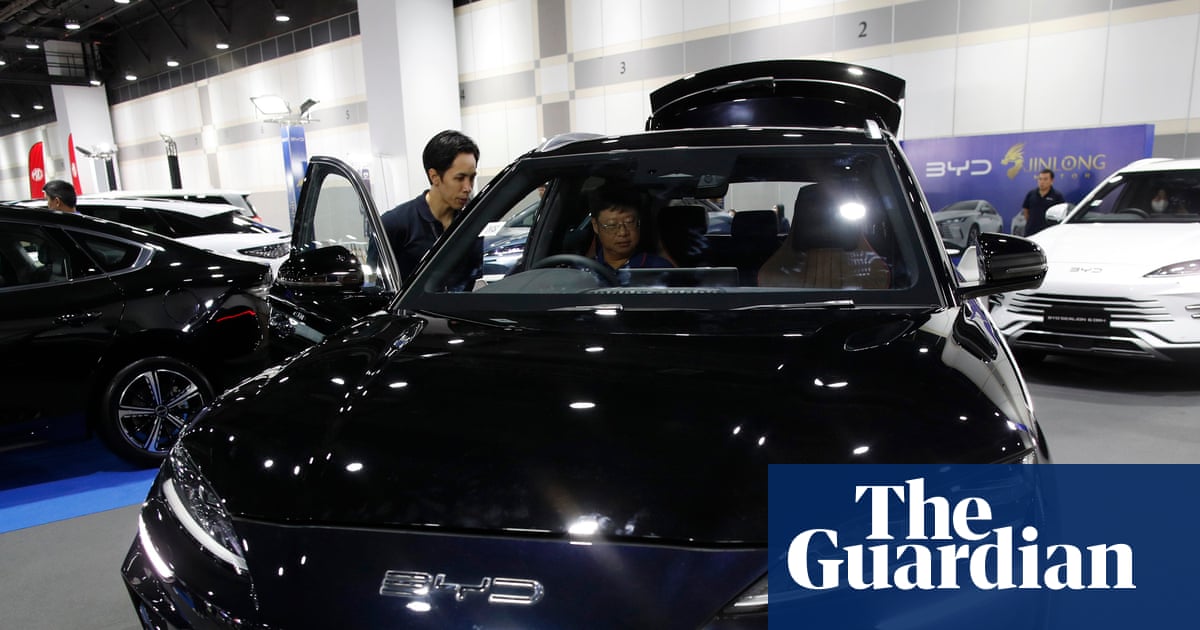The 38th Tokyo International Film Festival got off to a spectacular start on Monday with a galaxy of stars in attendance.
Attendees parading the red carpet at the storied Takarazuka Theater included a veritable who’s who of celebrities…

The 38th Tokyo International Film Festival got off to a spectacular start on Monday with a galaxy of stars in attendance.
Attendees parading the red carpet at the storied Takarazuka Theater included a veritable who’s who of celebrities…

Canadian swimming star Summer McIntosh says she’s ‘feeling great’ after recovering from an illness that caused her to miss three World Cup stops earlier this month, including a home meet in Toronto.
The 19-year-old sensation, who won three gold…

Jack DeJohnette, the jazz drummer celebrated as one of the genre’s true greats – who worked with stars including Miles Davis, Sonny Rollins and Charles Lloyd – has died aged 83. A press representative for ECM, the record label that released…

U.S. Treasury Secretary Scott Bessent speaks to reporters at the White House in Washington, D.C., Oct. 22, 2025.
Kevin Lamarque | Reuters
Treasury Secretary Scott Bessent on Monday confirmed that the list of candidates to replace Federal Reserve Chair Jerome Powell has been winnowed down to five, and President Donald Trump said the replacement is likely to be named by the end of the year.
Speaking to reporters on Air Force One, Bessent said the finalists are current Fed Governors Christopher Waller and Michelle Bowman, National Economic Council Director Kevin Hassett, former Fed Governor Kevin Warsh, and BlackRock executive Rick Rieder, according to several media outlets.
Those names were reported earlier this month by CNBC.
Bessent, who had been rumored to be a top candidate as well, said he has been conducting interviews and that he expects to do one more round before presenting a “good slate” to Trump after the Thanksgiving holiday.
Trump, also speaking to reporters Monday on Air Force One, said he anticipates naming a replacement by the end of the year. Powell’s term doesn’t expire until May. Powell then can either step down from the Fed entirely or continue serving a term as governor that lasts until 2028.
The Federal Open Market Committee meets this week, with an interest rate decision due Wednesday. Markets are pricing in a near certainty that the committee will lower its benchmark overnight borrowing rate by a quarter percentage point, which would follow a similar cut in September.
Trump has three appointees on the seven-member board of governors: Waller and Bowman, as well as Stephen Miran, who is filling an unexpired term that ends in January. Miran, who was confirmed in September as the head of the Council of Economic Advisers, is not expected to be reappointed. He has campaigned for the FOMC to be more aggressive in easing.
Should Powell opt to leave the Fed, that would give Trump four appointees. Trump thus far has been unsuccessful in trying to remove Governor Lisa Cook from the board. A rotating cast of five regional presidents joins the governors as voters during the FOMC meeting.

Two PhD students from Sydney have helped restore the sharp vision of the world’s most powerful space observatory without ever leaving the ground. Louis Desdoigts, now a postdoctoral researcher at Leiden University in the Netherlands, and his…

The International Committee of the Red Cross has accompanied members of Hamas inside areas of Gaza still under the control of the Israeli military to facilitate the search for the bodies of Israeli hostages, as the Palestinian militant group…

The Japanese carmaker Nissan is to team up with its Chinese electric vehicle rival BYD in an attempt to offset their carbon emissions and avoid EU penalties for 2025, it has confirmed.
It is part of a wider offsetting scheme the EU has sanctioned for the car industry that could help manufacturers of combustion engine cars head off an estimated £13bn in fines.
Nissan said in a statement: “Nissan has formed a pool with BYD for its CO2 fleet emissions in Europe for the 2025 calendar year. The scope of the agreement covers passenger vehicles within EU markets and will contribute to Nissan’s commitment towards zero emissions in a sustainable way, while continuing to support the EU’s 2050 decarbonisation target.”
It added that it had entered into the agreement to “ensure the business is better able to comply with EU regulations and continue the transition towards our own goal of zero emissions”.
Chinese exports of EVs to the EU are already posing an existential crisis to the European car industry but are now, like Tesla, helping traditional car firms meet their decarbonisation targets courtesy of an EU regulation that in effect allows car firms to “pool” emissions.
The EU has already extended the period for compliance with emissions rules from one year to three years, fuelling fears this will further delay the already slow take-up of EVs in the EU, particularly in southern Europe, but also in key states such as France and Germany.
Fredrik Eklund, responsible for carbon credits trading at the Chinese-owned Swedish brand Polestar, which only makes electric vehicles, said: “It risks delaying the transition from legacy cars to EVs. We are already seeing car manufacturers pushing at the 2027 expiry date, but from our point of view and from the point of view of society, we really don’t want to delay this.”
Under the rules, car manufacturers have to meet emissions targets of 93.6g of CO2 per kilometre.
But under the car pooling arrangement, car manufacturers can pay electric car companies to use their zero emissions record to average out the pollution from sales of their combustion engine cars to avoid fines.
The industry in the past has said the 2025 emissions targets could have led to as much as €15bn (£13.03bn) in fines.
The latest car pooling agreement, confirmed by Nissan, mirrors that of other companies who have teamed up with other big name electric car brands including Tesla and Polestar.
after newsletter promotion
Polestar has a pooling arrangement with Mercedes-Benz, Volvo and Smart cars, while Tesla’s zero emissions record is being mopped up by Toyota, Ford, Mazda, Alfa Romeo and Suzuki.
The price car companies are paying EV firms to offset their emissions remains confidential. But in January it was reported that carbon credit sales accounted for almost 3% of Tesla’s $72bn (£54bn) total revenue in the first nine months of last year – just over £1.6bn.
The car industry is now fighting for a softening of the EU’s 2035 target for banning the sale of new combustion engine cars, arguing that the public is still not prepared to make the switch in sufficient numbers, citing lack of infrastructure in southern and central Europe as part of the problem.

Fans can vote for their Women’s and Men’s Out of Stadium Athlete of the Year on World Athletics’ social media pages, with each individual ‘like’ on Facebook or Instagram and…